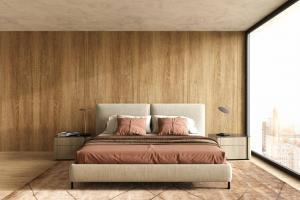At first glance, bat house building might seem like an ultra-simple proposition. After, all, bat houses look quite basic from the outside! The good news is that it’s very easy to put together a DIY bat house, so long as you include some crucial elements to help keep your winged guests comfortable and safe. Let’s get started! In just a few moments, you’ll know exactly how to build a bat house.
DIY Bat House Plans vs. Bat House Kit Setups
According to Bat Conservation International, most commercial bat house kits are unsuitable for habitation. While these kits often look nice, many are poorly constructed or come with inadequate instructions. There are a few good kits on the market though, mostly from conservation groups and others with years of expertise in building bat houses.
Some of the most common problems with bat house kits include:
- Chambers are too small
- Smooth interior crevices rather than rough ones
- Screening that can rust and fall off with use
- Insufficient or missing landing plates
- Unprotected roofs that leak and/or prevent heat retention
- Unprotected exteriors (even cedar warps eventually). Bats tend to dislike roosts finished with Kilz brand paint and primer; choose a different brand
- Completely closed bottom that encourages parasite buildup
- The use of salvaged lumber with potential contaminants
- If you have basic tools, access to simple building supplies such as plywood, and a little bit of time on your hands, you’ll find that it’s cheaper to build your own bat house – and it’s almost as easy as putting a kit together.

Essential Tools
If you don’t have the essential power tools on hand, you may be able to rent them from your local hardware store.
- Table saw or handsaw
- Circular saw
- Drill
- Paintbrushes
- Tape measure
- Caulking gun
- Hammer
- Tinsnips if using galvanized roofing
Essential Materials
We found this materials list and instructions for a single-chamber bat house at BCI.
- 1/4 sheet (2’x 4′) 1/2″ AC, BC, or T1-11 (outdoor grade) plywood. Do not use pressure treated wood when building a bat house.
- One piece 3/4″ x 1 1/2″ x 8′ pine for use as a furring strip
- One 1” x 4” x28” board for roof
- 20-30 1 1/4″ coated deck or exterior-grade Phillips screws
- One pint dark, water-based stain, exterior-grade
- One pint water-based primer, exterior-grade
- One quart flat water-based paint or stain, exterior-grade
- One tube paintable latex caulk
- 1″ x 3″ x 28″ board for roof (optional, but highly recommended)
- Black asphalt shingles or galvanized metal
- 6-10 7/8″ roofing nails (optional)
Building the Bat House
1. Measure the plywood, and then cut it to the following dimensions using the table saw, circular saw, or handsaw: 26 ½” x 24” (back), 16 ½” x 24” (upper front) and 5” x 24” (lower front).
2. With the circular saw set at 1/32” to 1/16”, cut grooves into one side of each of the three plywood pieces. These grooves should be 1/4” apart, and they should cover the entire surface of the plywood. This step is very important, as the bats will use these grooves to land on the base, climb up the interior, and cling to their roosting spots.
3. Apply two coats of the dark-colored water-based stain to the grooved inner surfaces you just finished cutting. Be sure not to skip this step. Bats prefer dark interiors!
4. Cut the furring strip into three pieces: cut two 20-1/2” pieces and one 24” piece
5. Lay the largest piece of plywood flat, with the grooved, dark-stained surface facing up. The furring strips will be sandwiched between this piece and the two other pieces of plywood. This creates a ¾” deep chamber for the bats to snuggle into.
6. Apply caulk to the 24” furring strip and lay it flat on the upper (24”) end of the plywood.
7. Apply caulk to the 20-1/2” furring strip pieces. Position them on the sides of the plywood, leaving a ½” gap between them and the upper furring strip section. These gaps provide ventilation.
8. Let the caulk on the furring strips dry for about 20 minutes before proceeding with the next step.
9. Apply caulk to the furring strip faces.
10. Lay the 16 ½” x 24” (front) piece of plywood on top of the furring strips with the grooves facing the inside of the bat house. Match one 24” edge with the upper edges of the upper furring strip and the bat house back.
11. Lay the 5” x 24” (lower front) piece of plywood on top of the furring strips with the grooves facing the inside of the bat house. Leave a ½ inch gap between the top of this piece and the bottom of the 16 ½” x 24” (front) piece. This creates a vent.
12. The lower grooved section of the bat house back should still be exposed. This is the landing area.
13. Give the caulk a little time to dry (about 20 minutes).
14. With the drill and an appropriate driver, use the deck screws to firmly attach the front pieces to the back pieces, going all the way through the furring strips.
15. Now that your bat house is mostly assembled, it’s time to apply caulking to the exterior seams. Give the caulking plenty of time to dry (at least 30 minutes) before moving on to the next step.
16. Attach the board to the top of the bat house with nails or screws. Caulk all around the edges and let the caulk dry for about 30 minutes.
17. Use roofing nails to attach your chosen roofing material to the top board.
18. Prime and finish the front, back, and sides of the bat house. Allow the finishes to dry completely.
19. Mount the bat house on the south or east side of a building, at least 12 feet off the ground.
How Much Time Does It Take to Build a Bat House?
Expect to spend six to eight hours building a bat house, plus time for your chosen finishes to dry. Mounting a bat house takes an average of 20 minutes.
What is the Average Cost of Building a Bat House?
With these simple supplies, you can build a bat nest for less than $50.
How to Attract Bats to a Bat House
Bat house design and placement play major roles in determining whether bats will be attracted to the structures we provide them with. As you’re determining which bat house design is best for you, keep the following factors in mind.
1. The type of mount to use depends largely on your climate. In moderate to hot areas where there is little variation between daytime and nighttime temperatures, bats tend to accept houses mounted on poles. Where night and day temperatures vary by more than a few degrees, most bat species prefer to roost in houses mounted on buildings or other large structures.
2. Try to position your bat house so that the base is between 12 and 20 feet from the ground, or the tallest vegetation underneath the bat house.
3. Bats need open areas to fly into. They are attracted to houses positioned about 20 to 30 feet from the nearest trees.
4. Many photos show bat nests mounted to trees. This looks scenic and comfortable to us, but it isn’t the best bat house location. Unfortunately, bats don’t like to use these houses because they don’t get enough sun. When determining bat house placement, try to choose an area that receives at least six hours of full sun daily. Positions facing south or east are best.
5. A single Little Brown Bat eats an average of 1,000 mosquitos per night, and larger species eat even more bugs. Because these insects thrive around water, it’s important to place your bat house fairly close to a water source. Colonies thrive when they are within at least ¼ mile from a water source.
6. Bats prefer different colored houses depending on location. You can use this map to determine which color is most likely to attract bats to the house you build.
Don’t be discouraged if your bat house stays empty for a while! It can take a few years for bats to find a new house and move in. They typically look for new roosts in springtime, so it’s a good idea to build bat houses by the end of winter and get them put up before bats emerge from hibernation.
Protecting Bats from Predators and Disease
Like other pollinators, bats need protection. You’re already helping by building your own bat house, but there are a few more things you can do to help ensure that your bat colony thrives.
- Keep cats indoors if possible. Cat attacks are a leading cause of death in bats, particularly during the summer months when female bats are caring for youngsters. Bats are most active from the half hour before the sun sets to about an hour after sundown. If you can’t keep your cat indoors 24/7, at least attempt to keep him confined during the early evening.
- If you mount your bat house on a pole, be sure to use a predator guard.
- Leave dead and dying trees intact if you can. These are bats’ natural roosts and they go a long way toward promoting healthy bat populations.
- Reduce pesticide use in your lawn and garden.
- Try not to disturb hibernating bats, as increased activity uses up fat stores quickly and can lead to starvation.
- Learn about white nose syndrome, how it spreads, and how to prevent it. A warm, dry bat house goes a long way toward preventing this fungal disease as it thrives in cold, moist conditions.
With just a little effort on your part, you can help protect bats by giving them a safe, comfortable place to live. They’ll pay you back by eating the bugs that like to bite you, and by providing you with an amazing aerial display each evening!




